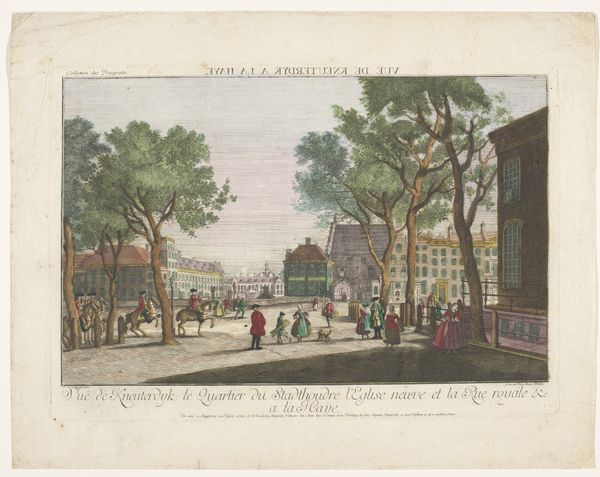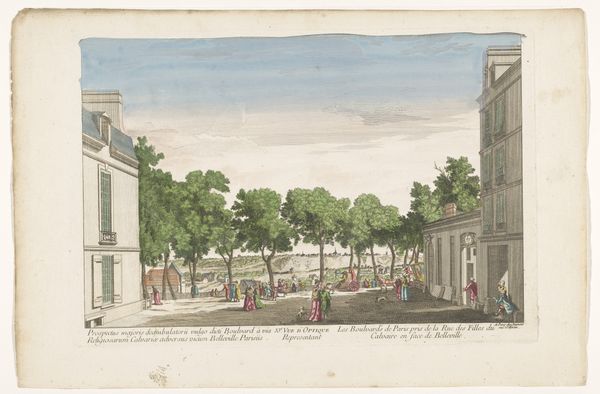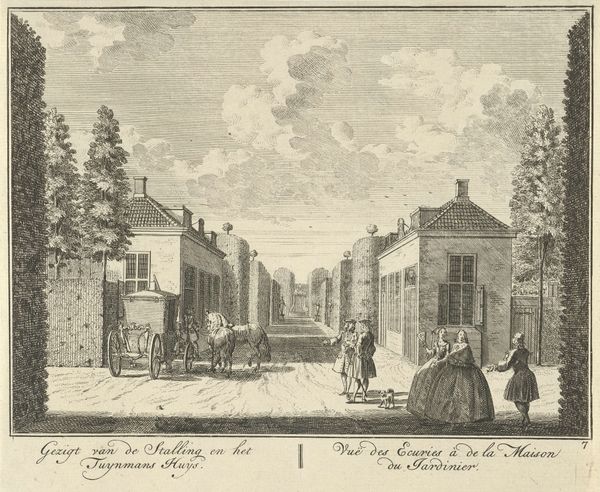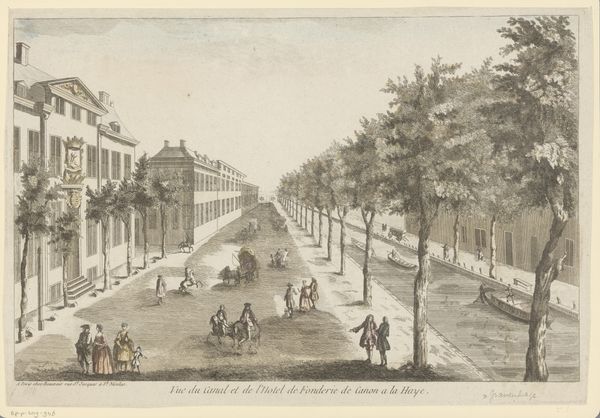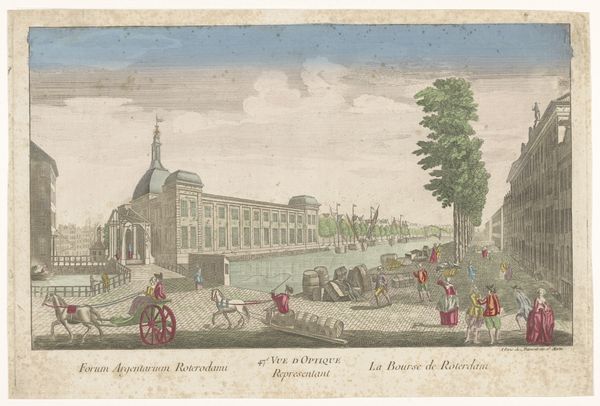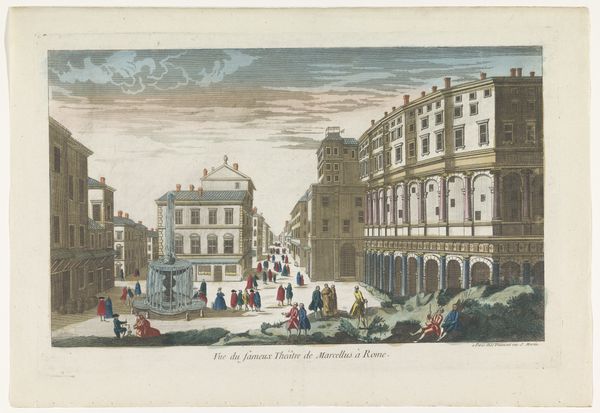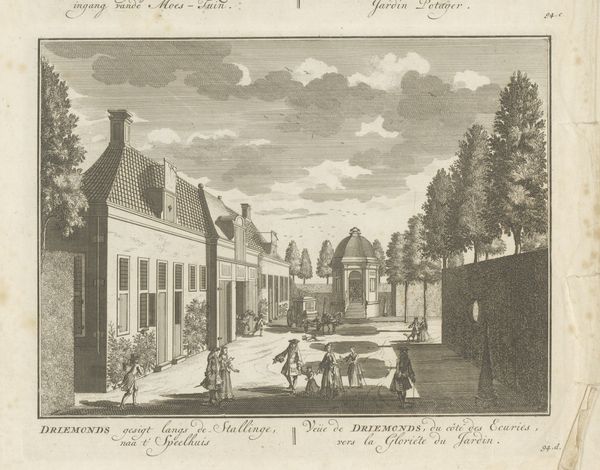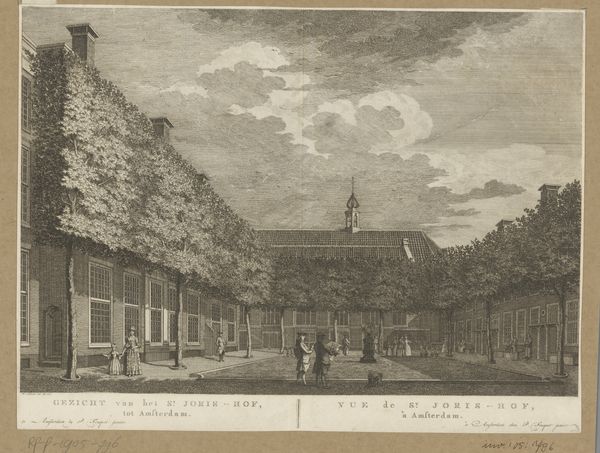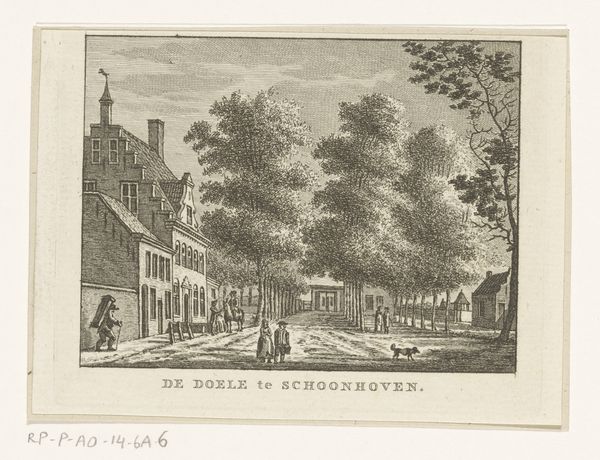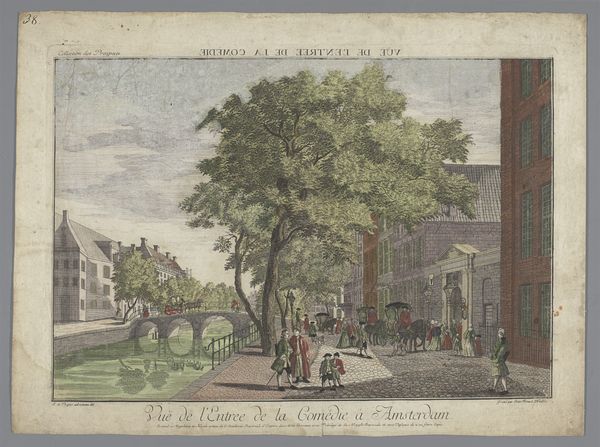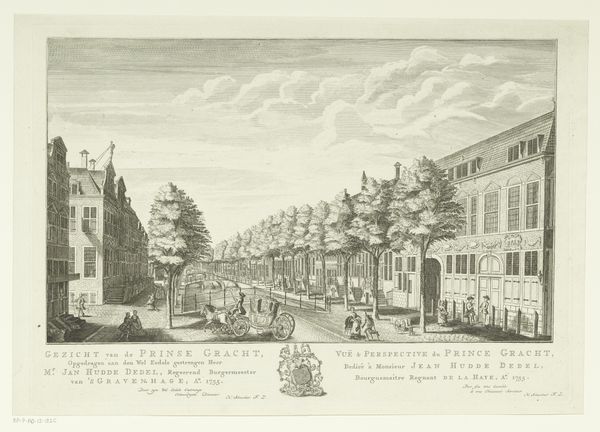
Gezicht op de Nieuwe Uitleg te Den Haag 1755 - 1779
0:00
0:00
kaiserlichfranziskischeakademie
Rijksmuseum
Dimensions: height 297 mm, width 427 mm
Copyright: Rijks Museum: Open Domain
Curator: What a wonderfully composed cityscape! It seems to be both carefully planned and casually observed. Editor: Indeed! This print, titled *View of the Nieuwe Uitleg in The Hague*, produced sometime between 1755 and 1779, offers us a glimpse into 18th-century Dutch urban life. Etched and engraved, it’s a remarkable record of a specific locale, now held in the Rijksmuseum. Curator: I’m struck by the representation of class and labor. Look at the well-dressed figures strolling near the imposing buildings versus the cluster of workers gathered by what seems to be a canal. What narratives can we unpack about social stratification based on where individuals occupy the frame and how they’re styled? Editor: That’s astute. The composition reinforces social hierarchy – the architecture, emblems of power, command the left side of the image, drawing the eye upward to those inhabitants positioned at the staircase of these grand buildings. Meanwhile, common folk and laborers inhabit the foreground right, engaged in work along the waterway, quite literally ‘grounded’ in labor and nature. We must remember that even something that feels like a straightforward depiction is actively shaping its viewers relationship with that society. Curator: Absolutely! The print highlights a specific perspective of Dutch society, focusing on commerce. It suggests how the era's societal values, as much as visual observations, shaped its creation. It subtly elevates the social standing of these figures adjacent to the political structure against what seems like a bustling commercial enterprise by the waterway. Editor: A crucial insight. Beyond the architectural and social details, consider the power of the image itself. Prints like these were vital tools for shaping public perception, showcasing civic improvements, and even promoting political ideologies. Curator: Precisely! A visual rhetoric that played an important part in fostering societal order, suggesting avenues for class identity formation through the simple distinction between those conducting themselves close to symbols of authority, and those active in industrious production. This piece allows for rich discourse regarding how art contributes to our interpretations of complex social conditions. Editor: What a provocative look into this seemingly simple Dutch scene. It pushes us to confront societal inequities of class through material analysis!
Comments
No comments
Be the first to comment and join the conversation on the ultimate creative platform.
